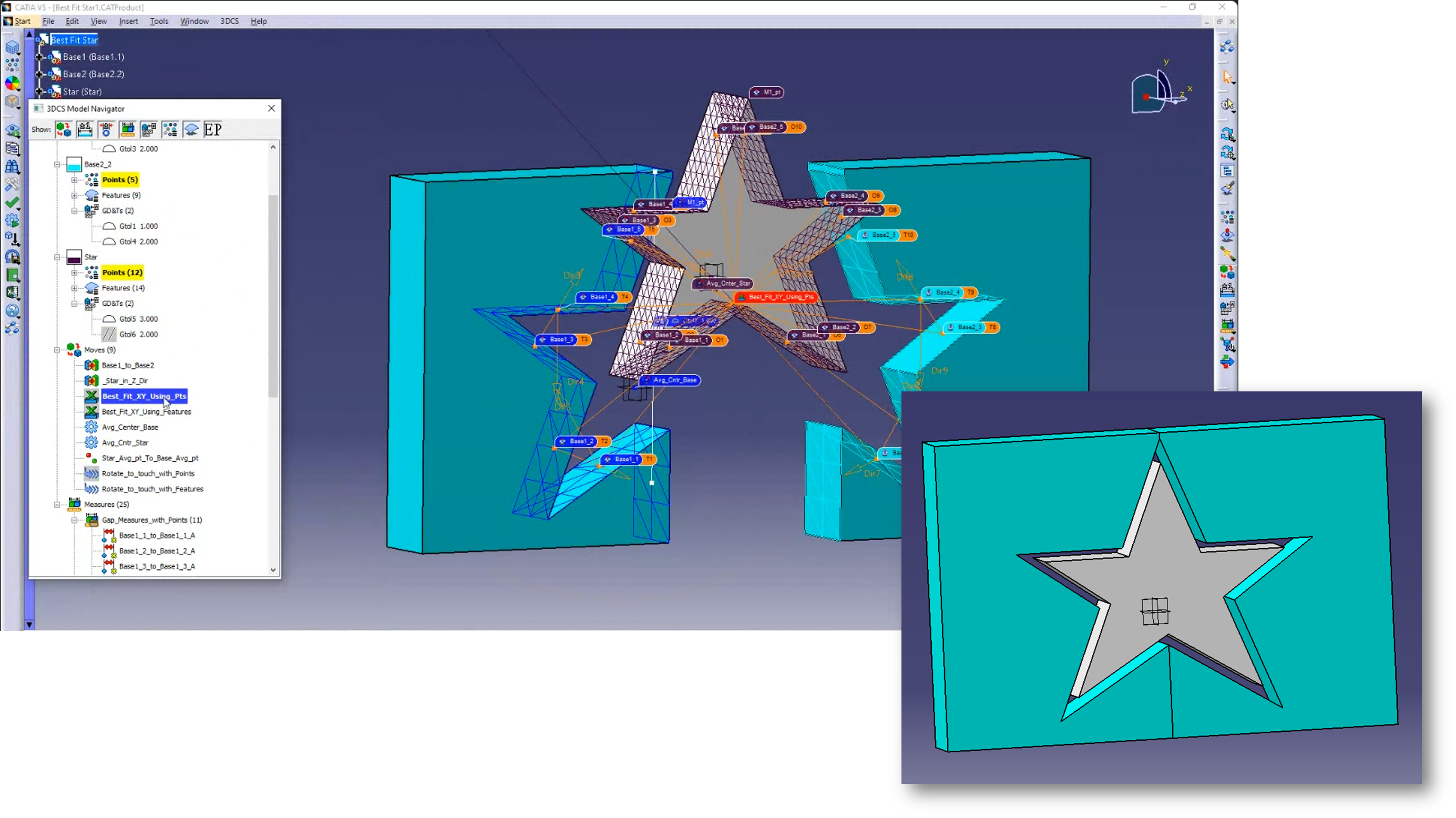
February 23rd, at 11 am EST, DCS will be presenting a free webinar on advanced modeling techniques that include a number of use cases that clearly show how tolerance analysis plays a role in far more than gaps and flushes.
A simple agenda belies a packed event:
The ![]() Best-Fit move is similar to the Six-Plane move except that it can have more than six pairs of locators defined. Like the Six-Plane move, each pair of locators needs a direction defined. Then, each object feature is best-fit to each target plane. Each target plane is defined by the target feature and the direction. If 4-way hole-pin pairs are locators, they need to be selected twice with two normal directions, just as in the Six-Plane move.
Best-Fit move is similar to the Six-Plane move except that it can have more than six pairs of locators defined. Like the Six-Plane move, each pair of locators needs a direction defined. Then, each object feature is best-fit to each target plane. Each target plane is defined by the target feature and the direction. If 4-way hole-pin pairs are locators, they need to be selected twice with two normal directions, just as in the Six-Plane move.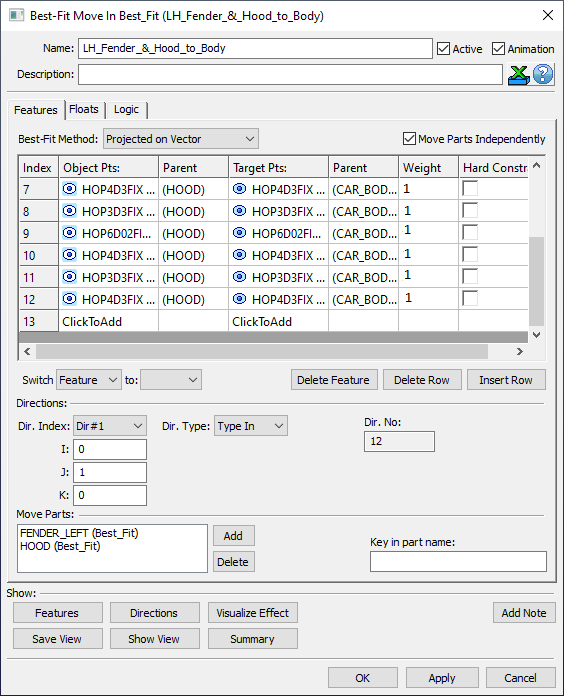
The Best-Fit move can fit multiple object parts to the target part(s). The object parts are independent from each other if points on each object part are used to locate each of them.
In addition to Best Fit, a number of advanced techniques will be shown and discussed -->
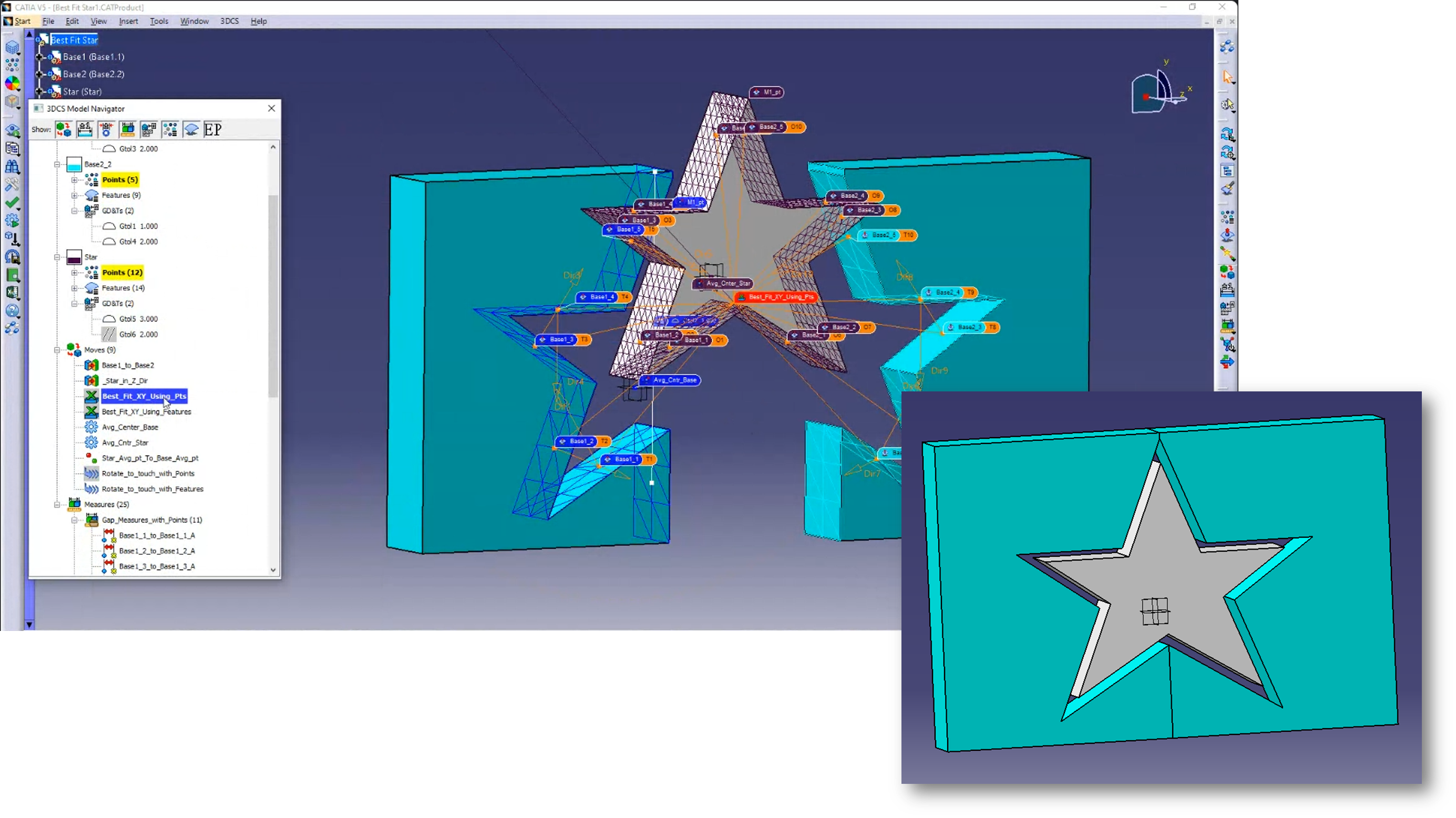
This model discussion will give you a deeper understanding of methods already available to you in 3DCS, as well as insight into a number of modeling methods that can help you to become more proficient and efficient in your future modeling projects. This first half alone is enough reason to join the webinar, but we left the coolest model for last.
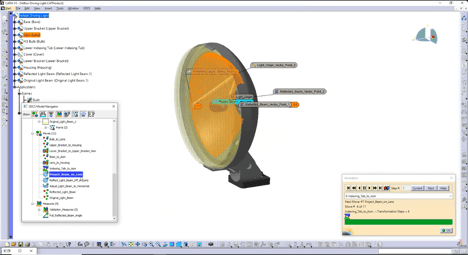 Similar in scope to Valeo's presentation at the DCS User Conference (you can find a summary here) which controlled for dimensional variation that influenced the projection of the user interface on the windshield of a car, this model focuses on how dimensional variation affects the beam direction of a headlight, providing methods to control the variation and ensure proper beam projection.
Similar in scope to Valeo's presentation at the DCS User Conference (you can find a summary here) which controlled for dimensional variation that influenced the projection of the user interface on the windshield of a car, this model focuses on how dimensional variation affects the beam direction of a headlight, providing methods to control the variation and ensure proper beam projection.
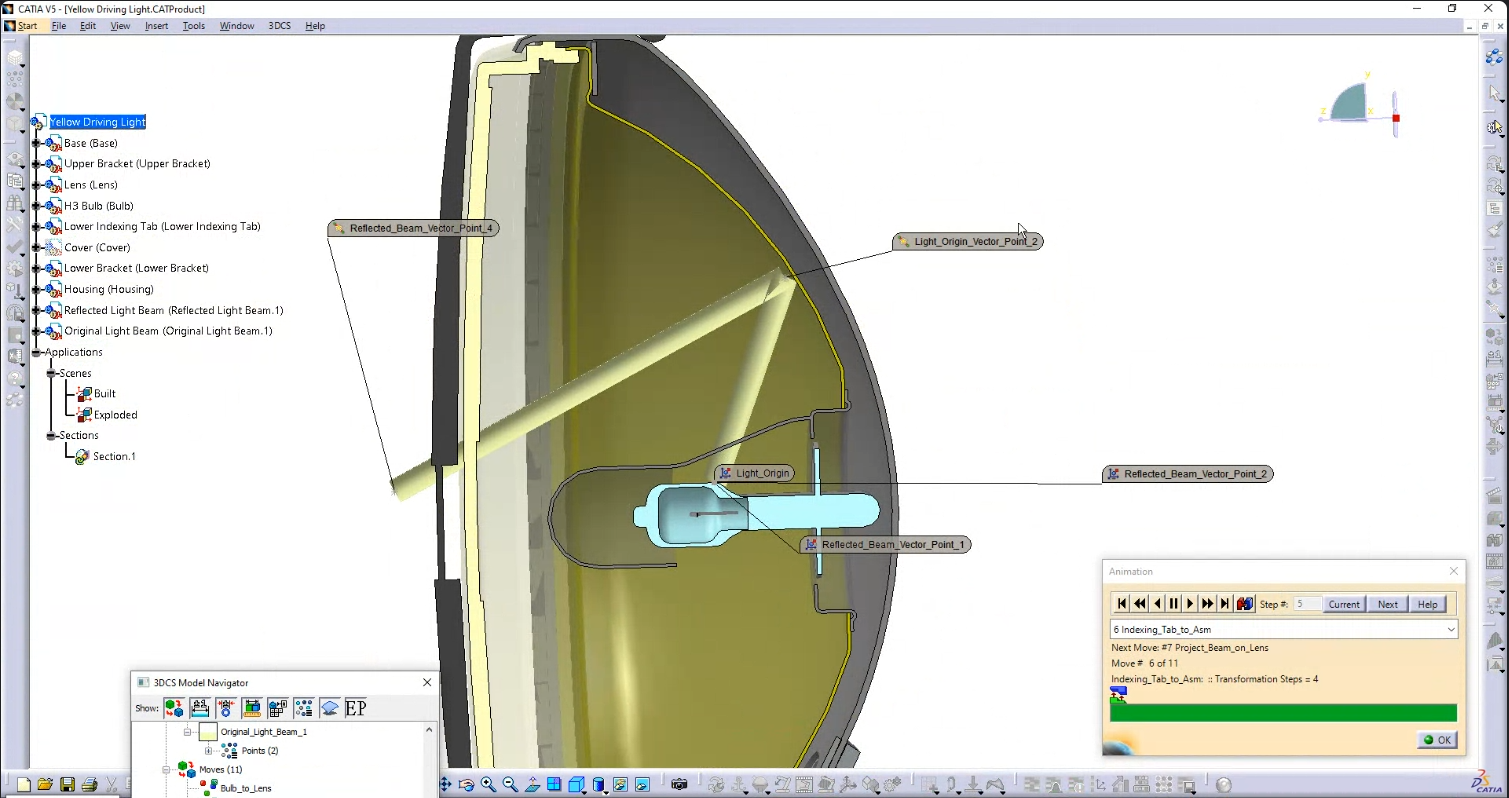
This modeling method applies just as functionally to optical sensors for a multitude of applications including user interfaces and display projections, cameras, lights, and laser trackers. Dimensional variation affects far more than just simple gaps and flush conditions and often influences non-dimensional features that can cause headaches at final assembly. What's more, the plant team is left scratching their heads when the source of the problem isn't intuitive. 3DCS provides the tools to quickly find these issues, whether predicting them during design or using plant measurement data to root cause the issue at final production. (You can see an example of this in Philips Medical's analysis of beam direction in an MRI-based radiation therapy machine here)
See all three models, learn how to build them, and find out how you can become a better analyst in this free webinar event
These Stories on CATIA
No Comments Yet
Let us know what you think